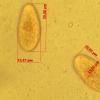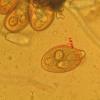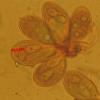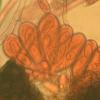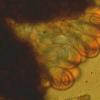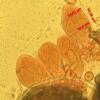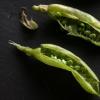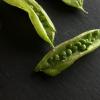
07-12-2025 16:07
Arnold BüschlenHallo, ich habe in einer Moos-Aufsammlung (epiphy

08-12-2025 21:04
Mark Stevens"Hello everyone,I'm relatively new to microscopy (

09-12-2025 12:06
 Andgelo Mombert
Andgelo Mombert
Bonjour,Je recherche l'article concernant Hypobryo

08-12-2025 18:59
 Lothar Krieglsteiner
Lothar Krieglsteiner
.. found by a seminar-participant, I do not know t

08-12-2025 17:37
 Lothar Krieglsteiner
Lothar Krieglsteiner
20.6.25, on branch of Abies infected and thickened

16-03-2014 22:00
Hello,I found this species a few months ago but ha

08-12-2025 13:39
Thomas Læssøehttps://svampe.databasen.org/observations/10572899
Bonjour.
Merci de venir à mon secour pour détermine ce que je pense être un asco,
Récolter sur Astragallus glycyphyllos.
Les asques (avec 4 spores) mesurée (63.58-65.2) X 34.81 µm.
Les spores épaisses de 1.9 µm. mesurée (25.55-25.93) X (12.7-13.52) µm.

As for me your fungus asci and ascospores are similar with Erysiphaceae representative.
What can you say about the fruit bodies and appendages of fruit bodies?
Alex
Quant à moi vos champignons et asques des ascospores sont similaires avec le représentant Erysiphaceae.
Que pouvez-vous dire sur les corps des fruits et des appendices des organes de fruits?
Alex
C'est un oïdium, donc bel et bien un asco: une Erysiphale.
Sur une photo, on voit les fulcres dirigés vers le haut (ce sont les poils des petites cléistothèces). Cela correspond bien avec Microsphaera astragali (maintenant Erysiphe astragali) qui pousse sur Astragalus glycyphyllos. Les dimensions des spores et les asques correspondent bien aussi. Je l'ai eu au Mont des Pins.
Regarde dans la doc que je t'avais envoyée sur les oïdiums, notamment les publications de Léon Slupinsky: il est dedans.
Amitiés - LUC.
(bon, maintenant je termine de préparer mes affaires: je pars en Champagne pour quatre jours, faire de la myco notamment, et je reviendrai sans doute avec des ascos.)

Description from Braun, U. 1987, Nova Hedwigia, Beih. 89: 298
Erysiphe astragali DC., Fl. Fr. VI, p. 105 (1815).
= Microsphaera astragali (DC.) Trev.
Alphitomorpha holosericea Wallr., Verh. Ges. naturf. Freunde BerIin 1, p. 41 (1819) , type host - Astragalus glycyphyllos. A. astragali (DC.) WaIIr., Ann. Wetter. Ges. N. F. 4, p. 244 (1819). E. holosericea (Wallr.) Link, in L., Sp. Pl. 4, 6(1), p. 115 (1824). Alphitomorpha sericea Wallr., Fl. Crypt. Germ. 2, p. 757 (1833), type host - Astragalus glycyphyllos. Microsphaera holosericea (Wallr.) Lév., Ann. Sci. Nat., bot., 3. sér. ,15, p. 159 & 381 (1851). Trichocladia astragali (DC.) Neger, Flora 88, p. 351(1901).
IIl.: Léveillé (1851, pl. 9, fig. 27); Tulasne & Tulasne (1861, pl. 5, fig. 2); Magnus (1899, pl. IX, fig. 5-7); Salmon (1900, pl. 3, fig. 47-51); Blumer (1933,p. 335, fig. 133; 1967, p. 245, fig. 81); Vasjagina et al. (1961, p. 279, fig. 91); Sandu-Ville (1967, p. 286, fig. 50); Moro?kovs'kij et al. (1969,p. 74, fig. 35); Zhao (1979, p. 94, fig. 52); Yu & Lai (1981,p. 35, fig. 2); Braun (1984c, p. 240, fig. 40); Salata (1985, pl. IX).
Lit.: Saccardo (1882,p. 12); Salmon (1900,p. 127); Jaczewski (1927,p. 300); Blumer (1933,p. 334; 1967, p. 245); Vasjagina et al. (1961, p. 278); JuneIl (1967,p. 54); Sandu-ViIIe (1967, p. 258); Moro?kovs'kij et al. (1969,p. 73); Eliade (1976,p. 194); Bunkina (1979,p. 87); Zhao (1979,p. 93); Yu & Lai (1981,p. 35); Salata (1985,p. 147).
Exs.: F. exs. suec. 1190. Fl. Exs. Austr.-Hung. 3576. Fuck. , F. rhen. 694. Krieger, F. sax. 1222. Rabenh. , F. eur. 439, 2413. Rabenh., Herb. myc. 469. Rehm, Ascomyc. 448. Romell, F. exs. scand. 62. Roum. , F. gaIl. exs. 1164, 3141. Sacc. , Myc. ven. 148. Syd. ,Myc. germ. 2520. Syd. , Myc. march. 979. Thüm. , F. austr. 459. West., Herb. Crypt. Belg. 1059.
Mycelium amphigenous, effused or irregular patches, persistent or subpersistent, conidia formed singly, ellipsoid-cylindric, ca 30-45 x 16-24 µm (fresh), appressoria lobed, conidiophores erect, foot-cells cylindric, 30-50 x 8-10.5 µm, followed by two shorter cells, sometimes by one longer cell. Cleistothecia scattered or subgregarious, 80-155 µm in diam, cells irregularly polygonal, obscure, ca 6-20 µm diam, appendages equatorially arising or somewhat from the upper half of the ascocarp, ca 2-12 times as long as the cleistothecial diam, ca 5-25, basal part mostly distinctly curved, appendages horizontally spread or usually turning towards one direction, sometimes fasciculate, flexuous, hyaline or coloured near the base, aseptate or with 1-2(-3) septa near the base, thin-walled to moderately thickwalled, usually thin-walled above and thick-walled towards the base, smooth to rough, 5-12 µm wide, apex mostly simple, some appendages dichotomously branched, 1-3 times, branchings loose and wide, lax, tips straight or recurved, primary branches sometimes recurved, occasionally forked in the lower half, asci 5-14, mostly shortly stalked, 50-85 x 25-50µm, ascospores (2-)3-5(-6), ellipsoid-ovoid (-subglobose), (15-)18-26x 10-16 µm. Pl. 79.
Lectotypus: on Astragalus glycyphyllos L., France, "Erysiphe astragali, No. 235," herb. de Candolle (G).
Hosts and distr.: on numerous host species of the genus Astragalus, Aragallus and Oxytropis, Fabaceae; all Europe, Mediterranean region, Asia Minor to Central Asia, Siberia, China, Far East of the USSR, Japan, Pakistan, North America (USA).

J'ai été intéressé par les organes de fruits de champignons, pas des Astragakus :-) C'est un petit boules de couleur qui ont été obtenues avez indiqué dans la photo ascospores.
Alex

